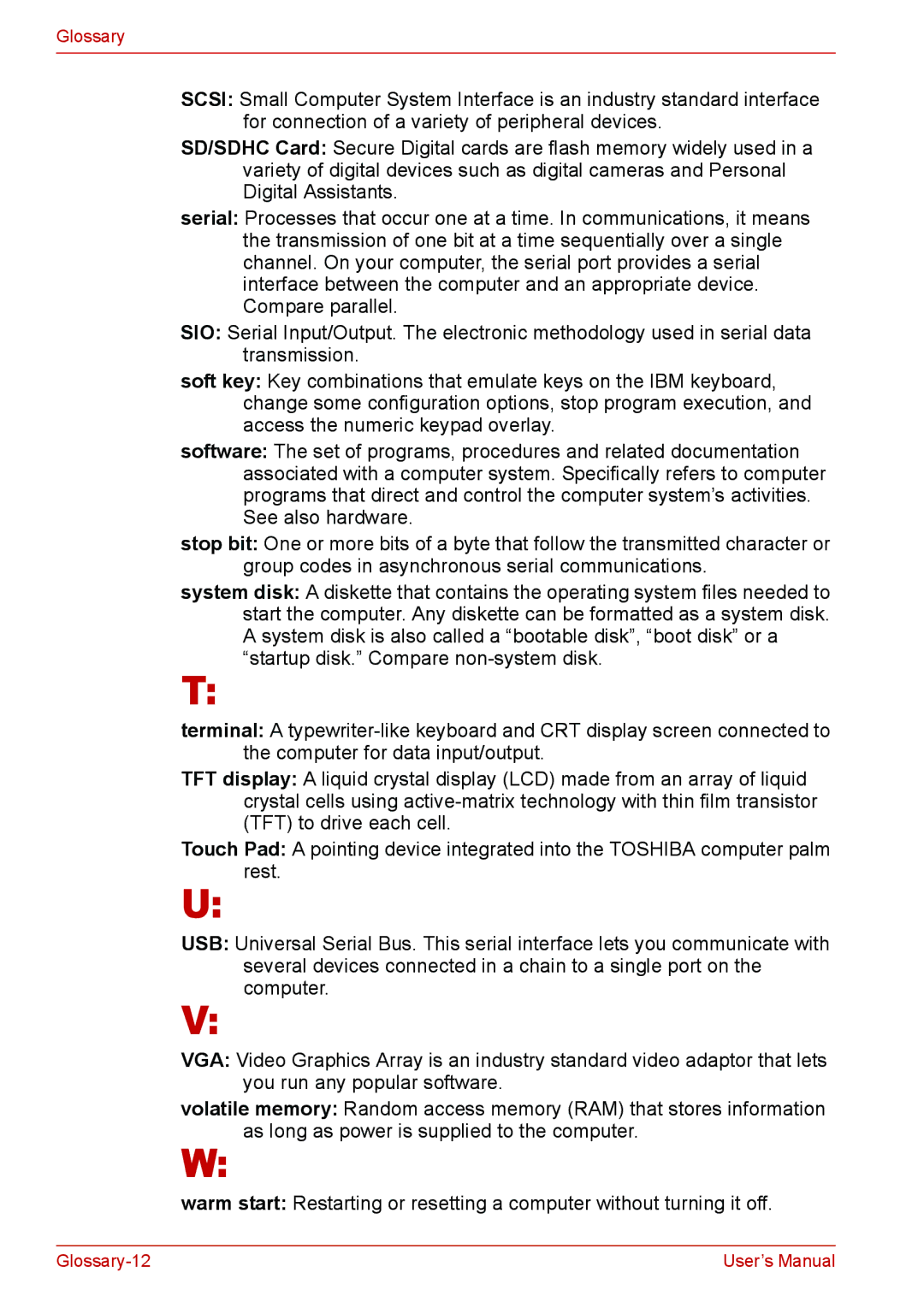
Glossary
SCSI: Small Computer System Interface is an industry standard interface for connection of a variety of peripheral devices.
SD/SDHC Card: Secure Digital cards are flash memory widely used in a variety of digital devices such as digital cameras and Personal Digital Assistants.
serial: Processes that occur one at a time. In communications, it means the transmission of one bit at a time sequentially over a single channel. On your computer, the serial port provides a serial interface between the computer and an appropriate device. Compare parallel.
SIO: Serial Input/Output. The electronic methodology used in serial data transmission.
soft key: Key combinations that emulate keys on the IBM keyboard, change some configuration options, stop program execution, and access the numeric keypad overlay.
software: The set of programs, procedures and related documentation associated with a computer system. Specifically refers to computer programs that direct and control the computer system’s activities. See also hardware.
stop bit: One or more bits of a byte that follow the transmitted character or group codes in asynchronous serial communications.
system disk: A diskette that contains the operating system files needed to start the computer. Any diskette can be formatted as a system disk. A system disk is also called a “bootable disk”, “boot disk” or a
T: “startup disk.” Compare
terminal: A
TFT display: A liquid crystal display (LCD) made from an array of liquid crystal cells using
Touch Pad: A pointing device integrated into the TOSHIBA computer palm
U: rest.
USB: Universal Serial Bus. This serial interface lets you communicate with several devices connected in a chain to a single port on the
V: computer.
VGA: Video Graphics Array is an industry standard video adaptor that lets you run any popular software.
volatile memory: Random access memory (RAM) that stores information
W: as long as power is supplied to the computer.
warm start: Restarting or resetting a computer without turning it off.
| User’s Manual |
